hankyoreh
Links to other country sites 다른 나라 사이트 링크
[Reportage] New funeral culture taking hold in South Korea

“I will return to heaven / This day is the end of my sojourn to this beautiful world / Go and say it was beautiful” – The final passage of the poem, “Return to Heaven,” by Cheon Sang-byeong
Everyone comes back to the place where they came from. No matter if one is rich or poor, beautiful or ugly, the sojourn ends for everyone. Like Cheon Sang-byeon’s poem, death can be said to be beautiful. Death is a painful, fearful, and difficult thing, but at the end, it includes a portion of beauty as well.

As Korean society continues to age, there is increasing interest in tying up of the loose ends of life and “dying well.” This is a choice to sufficiently look back on one’s life and put one’s affairs in order, even beyond their own death. After cleaning and arranging their surrounding area, they can choose the photo to be displayed at their funeral, their funeral arrangements, and write letters to their friends and loved ones which can be opened following death.
Choosing whether to be buried or cremated is the representative choice that a person faces prior to death. There is also the consideration of whether the remains should be placed in a burial mound or in a jar or even under a tree.
Cremation has been a general practice for a long time. According to documents from the Ministry of Health and Welfare, in 1994, 20.5% of people choose cremation after they died. This figure rose to 49.2% in 2004 and 82.7% in 2016. As cremation has become a more popular option, facilities for the repose of the ashes have also diversified. The extent of how much these facilities are changing in order to better accommodate the families who tend to the remains is also attracting attention.
Until now, the primary emphasis of these facilities has been as a place of rest for the deceased, and consideration for the visitors was insufficient. The memorial spaces that were once considered to be dark, cramped, and dreary are transforming into restful, healing places where visitors can comfortably remember their loved ones.
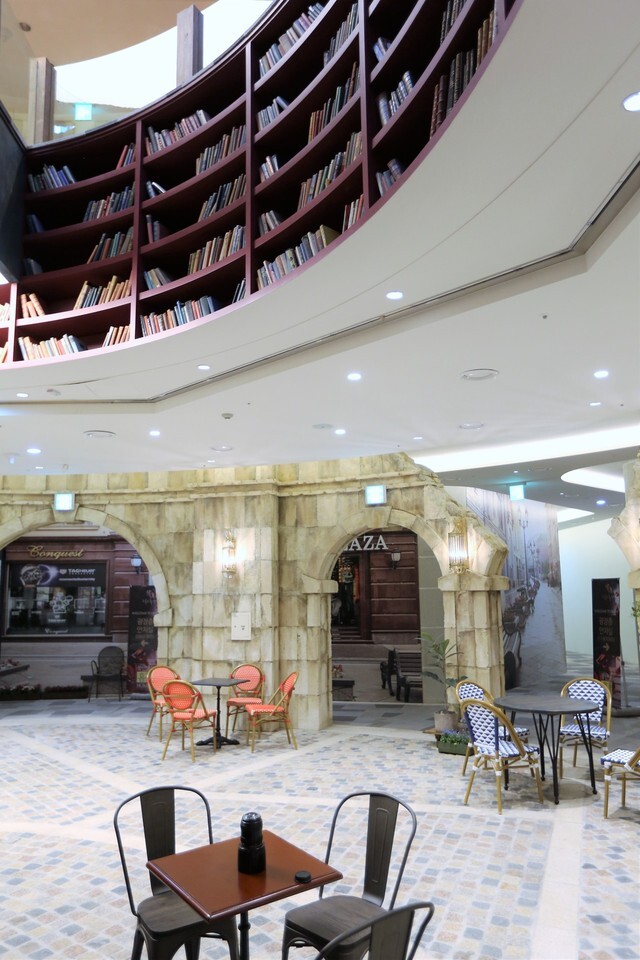
A person’s life is like a book
On Mar. 23, I came to the “Home, House of Memory and Eternity” in Songpa Park in the Yatap neighborhood of Seongnam, Gyeonggi Province. This is a recently constructed enshrinement facility in the Bundang Memorial Park (formerly the South Seoul Cemetery Park.) Twelve giant circular towers seem to have shrunk the nearby apartment complexes in a distinct manner. Each of these structures, which are equipped with an elevator, house the remains of deceased individuals. The lobby on the second floor of the main building has the atmosphere of a luxury hotel or a vintage café. Also drawing the eyes of visitors is a circular bookshelf which exhibits books and decorative antiques. The spacious bookshelf makes the place feel just like a library. At the end of last year, the non-profit foundation governing body for Songpa Park provided a viewing of the “Home, House of Memory and Eternity.”
“This is the world’s first study-style facility for the repose of a person’s ashes. It breaks from the cold atmosphere and standardization of existing facilities. It provides a comfortable and friendly atmosphere for the families left behind, and frees them from worrying about the repose of their loved ones,” said Roh Sang-myung, director of Songpa Park.
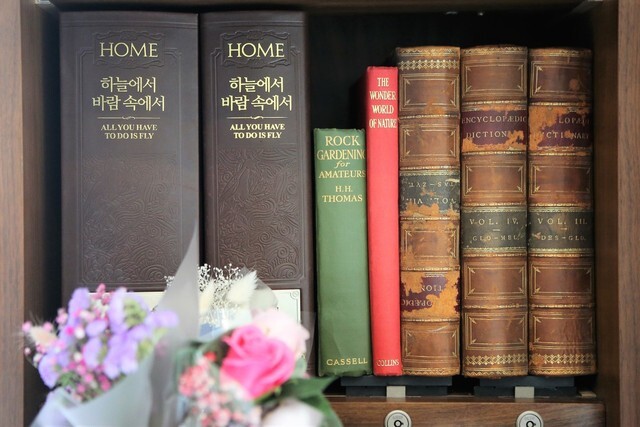
The library-style facility is filled with a variety of thick books, including “Inside the Wind and Sky.” The books have leather-bound hardback forms, but inside they are filled with boxes containing the ashes and personal remains of the deceased. This is a different from other existing facilities, which have the appearance of “ashes inside a glass wall.” It signifies that a deceased person’s life is like a book. Each person is offered two books, with one for their remains and one for their personal effects. These include photos, glasses, pens, cell phones, rings, or letters that a person left behind when they died. Letters written to the deceased from loved ones can also be included. Family members safeguard the keys and can come open the book whenever they wish.
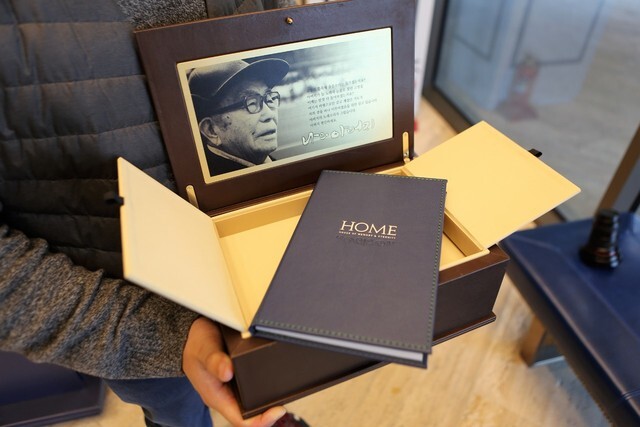
The building provides a free café. Visitors can sit and drink tea in a chair or at one of the tables as they think about the deceased. Bags, wine, music instruments are displayed in small store-like display stand also. The items on display can be changed at any time to accommodate visitors.
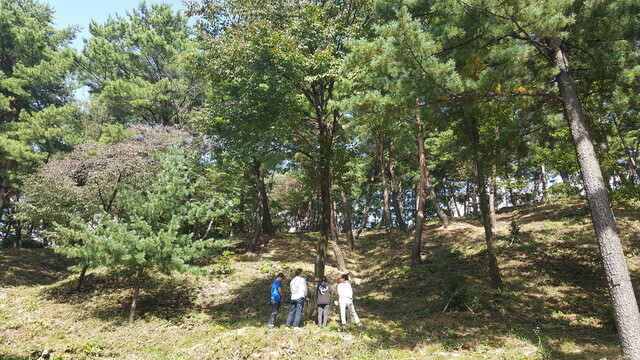
A natural burial consists of burying ashes under the a tree in a grove, under a field covered with grass, under a flower garden, under a stone in a field, etc. After starting Switzerland in 1993, the concept of a natural burial rapidly expanded throughout the globe. It is a minimalist concept with only a name marker for the deceased and with small stone figures or signs on top of it. A box containing the ashes is placed in a small wooden, felt, or earthenware container and as time goes by, the remains join together with the soil as a truly natural funeral. In South Korea, there were 37 natural burial areas in 2011, which expanded to 106 by 2016, a more than three-fold increase in just five years.
Awareness of natural burials has changed as well. A 2014 survey conducted by Seoul National University found that natural burials were the most preferred type of funeral (44.2%), followed by internment of ashes (37%). Among those who preferred the natural burial, 55.1% chose a grove of trees for their final resting place, while 19.2% selected the suburbs outside of a city, and 16.3% picked their hometown. This answer reflects the desire of people to return to the bosom of nature.
The most representative place for a natural burial amongst the mountains and streams is the National Sky and Forest Memorial Park in Yangpyeong, Gyeonggi Province, which is administered by the Korea Forest Welfare Association, and comes under the jurisdiction of the Korea Forest Service. It is the only national facility of its kind in the country. It is 55 hectares by 48 hectares in area. Within the cemetery there are 6315 designated trees for burial, including pine, oak, wild cherry, dogwood, and others. Of these, about 4000 trees have already been used for natural burials, while the roughly 2000 which remain are being divided into those for families and those for communal use.
The burial fee (which covers 15 years of use) is inexpensive. Depending on the location, a communal tree costs between 711,000 won (US$670) and 735,000 won (US$680) while a tree for families runs between 2,250,000 won (US$2,115) and 2,325,000 won (US$2,180). The length of the first contract is 15 years, but this can be extended a total of three times, for a total use of 60 years.
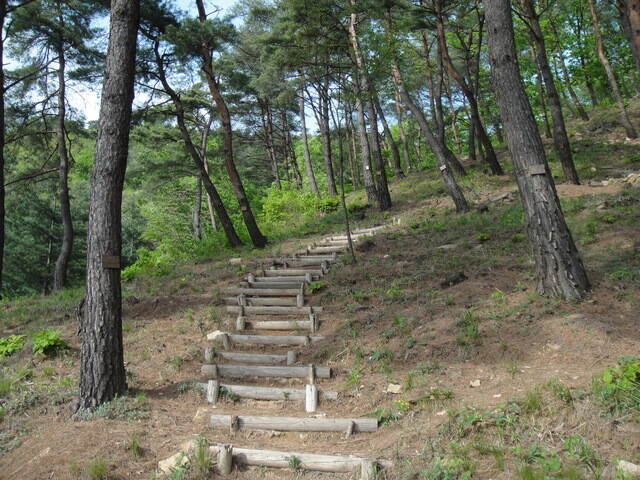
With 11 separate areas available for family members to remember the departed, rest their minds and relax, the cemetery is worthy of being called a natural forest park. Thick forest surrounds a walking and bicycle course, and there is also a forest lodge and a 3.6 hectare area for camping. Beginning last year, there is also a camping festival that takes place during the spring.
A natural burial area keeps pace with this age of increasing awareness of health and healing by providing leisure space for visitors. By giving family members the ability both to remember the deceased and enjoy a trip to the forest, it has the effect of killing two birds with one stone.
Due to the positive response to the National Sky and Forest Memorial Park, the Forest Service has plans to expand the concept to 50 more public and private natural burial areas. The facilities of these planned memorial parks will also include a variety of rest areas and outdoor activity spaces for visitors.
The priority now is for governing bodies in Gangwon Province, Daejeon, Chungcheong Province, Gwangju, Jeolla Province, and Daegu, North Gyeongsang Province to administer one national natural burial area in each location, and to create policies that allow either government offices or private entities with expertise in forest preservation to operate natural burial areas in these locales.
By Lee Byeong-hak, travel correspondent
Please direct questions or comments to [english@hani.co.kr]

Editorial・opinion
![[Column] Park Geun-hye déjà vu in Yoon Suk-yeol [Column] Park Geun-hye déjà vu in Yoon Suk-yeol](https://flexible.img.hani.co.kr/flexible/normal/500/300/imgdb/original/2024/0424/651713945113788.jpg) [Column] Park Geun-hye déjà vu in Yoon Suk-yeol
[Column] Park Geun-hye déjà vu in Yoon Suk-yeol![[Editorial] New weight of N. Korea’s nuclear threats makes dialogue all the more urgent [Editorial] New weight of N. Korea’s nuclear threats makes dialogue all the more urgent](https://flexible.img.hani.co.kr/flexible/normal/500/300/imgdb/original/2024/0424/7317139454662664.jpg) [Editorial] New weight of N. Korea’s nuclear threats makes dialogue all the more urgent
[Editorial] New weight of N. Korea’s nuclear threats makes dialogue all the more urgent- [Guest essay] The real reason Korea’s new right wants to dub Rhee a founding father
- [Column] ‘Choson’: Is it time we start referring to N. Korea in its own terms?
- [Editorial] Japan’s rewriting of history with Korea has gone too far
- [Column] The president’s questionable capacity for dialogue
- [Column] Are chaebol firms just pizza pies for families to divvy up as they please?
- [Column] Has Korea, too, crossed the Rubicon on China?
- [Correspondent’s column] In Japan’s alliance with US, echoes of its past alliances with UK
- [Editorial] Does Yoon think the Korean public is wrong?
Most viewed articles
- 1‘We must say no’: Seoul defense chief on Korean, USFK involvement in hypothetical Taiwan crisis
- 2N. Korean delegation’s trip to Iran shows how Pyongyang is leveraging ties with Moscow
- 3[Column] Park Geun-hye déjà vu in Yoon Suk-yeol
- 4Amnesty notes ‘erosion’ of freedom of expression in Korea in annual human rights report
- 5‘Weddingflation’ breaks the bank for Korean couples-to-be
- 646% of cases of violence against women in Korea perpetrated by intimate partner, study finds
- 7[Reportage] On US campuses, student risk arrest as they call for divestment from Israel
- 8“Parental care contracts” increasingly common in South Korea
- 9[Interview] Dear Korean men, It’s OK to admit you’re not always strong
- 10Korean government’s compromise plan for medical reform swiftly rejected by doctors